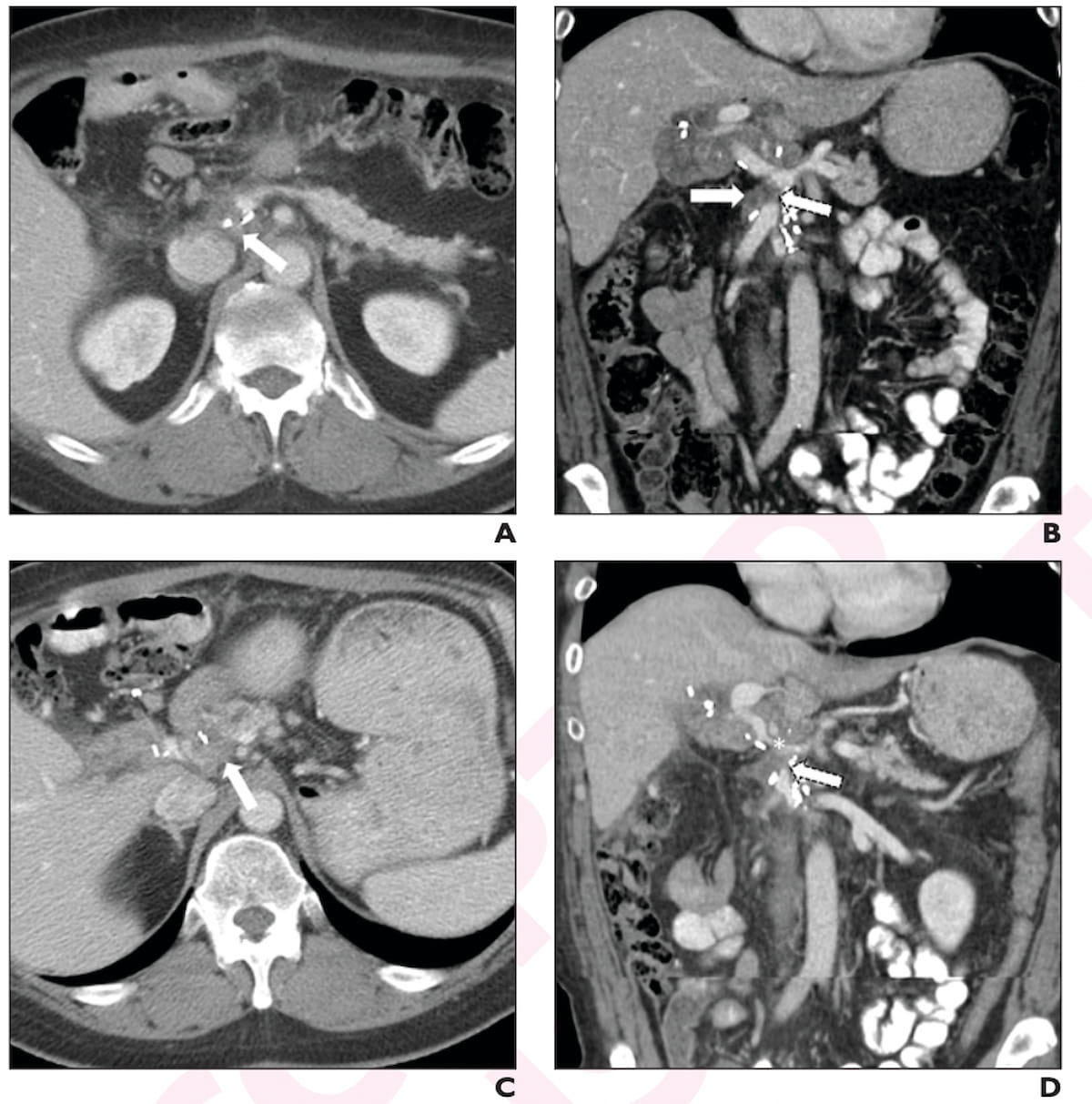Over one-third of patients with post-op recurrence of pancreatic ductal adenocarcinoma (PDAC) had evidence of vessel encasement and luminal narrowing, and approximately 80 percent had new or increased soft tissue on follow-up computed tomography (CT) scans, according to new research findings.
For the retrospective study, recently published in the American Journal of Roentgenology, researchers examined data from follow-up CT exams for 126 patients (mean age of 68.5) who underwent a Whipple procedure for PDAC. Eighty-one patients (64 percent) developed local recurrence (LR), according to the study.
The study authors found that new or increased soft tissue was evident on 80 to 86 percent of follow-up CT exams for patients with local PDAC recurrence. The three reviewing radiologists also noted vessel encasement and luminal narrowing on CT for 36 to 59 percent of patients with local PDAC recurrence.
“ … For all three readers, the presence of soft tissue on the baseline postoperative CT examination was a significant independent predictor of the eventual development of LR,” wrote lead study author Tae-Hyung Kim, M.D., MSc, who is affiliated with the Department of Radiology at Memorial Sloan Kettering Cancer Center in New York, N.Y., and colleagues.
There was varied interpretation on the presence of new or increased stranding on CT exams in patients with LR (ranging between 27 to 77 percent) with poor inter-reader agreement noted for baseline and subsequent post-op CT exams, according to the study authors.
Three Key Takeaways
1. High recurrence indicators: New or increased soft tissue was observed on 80-86 percent of follow-up CT exams in patients with local PDAC recurrence, making it a strong indicator of recurrence.
2. Vessel encasement and luminal narrowing. These features were found in 36-59 percent of patients with local recurrence, highlighting their importance in follow-up evaluations.
3. Stranding and solid soft tissue on CT. While differentiating between stranding and solid soft tissue is challenging, the presence of solid soft tissue, especially when associated with vessel narrowing, strongly suggests local recurrence. The interpretation of new or increased stranding varied widely among radiologists, which underscores the difficulty in assessing these findings on follow-up CT exams.
“In clinical practice, differentiating stranding and solid soft tissue is challenging and, in our experience, radiologists may hesitate to suspect LR even when solid tissue is present, instead choosing to describe the finding as postoperative changes,” noted Kim and colleagues. “ … When the baseline postoperative examination shows solid soft tissue, particularly when this tissue has associated vessel narrowing, interpreting radiologists should strongly consider possible LR.”
Other post-op CT findings for patients with local PDAC recurrence included new or increased pancreatic duct dilatation (25 to 26 percent) and the development of new or increased ascites (20 to 23 percent). However, the study authors said a multivariable analysis revealed these findings lacked significant correlation for predicting local PDAC recurrence.
(Editor’s note: For related content, see “Could a New Deep Learning Tool Enhance CT Detection of Pancreatic Cancer?,” “Image IQ Quiz: Patient with Abdominal Pain, New Medications and Elevated Lipase” and “Abdominal CT Study Shows 20 Percent Reduction in Iodine Contrast with Photon Counting CT.”)
Beyond the inherent limitations of a single-center retrospective study, the authors acknowledged varying follow-up intervals and noted a lack of complete follow-up CT protocol adherence to Society of Abdominal Radiology (SAR) recommendations for pancreatic ductal adenocarcinoma (PCAC). The researchers conceded there was no assessment of the impact of neoadjuvant chemotherapy nor neoadjuvant radiation treatment upon local recurrence rates.
